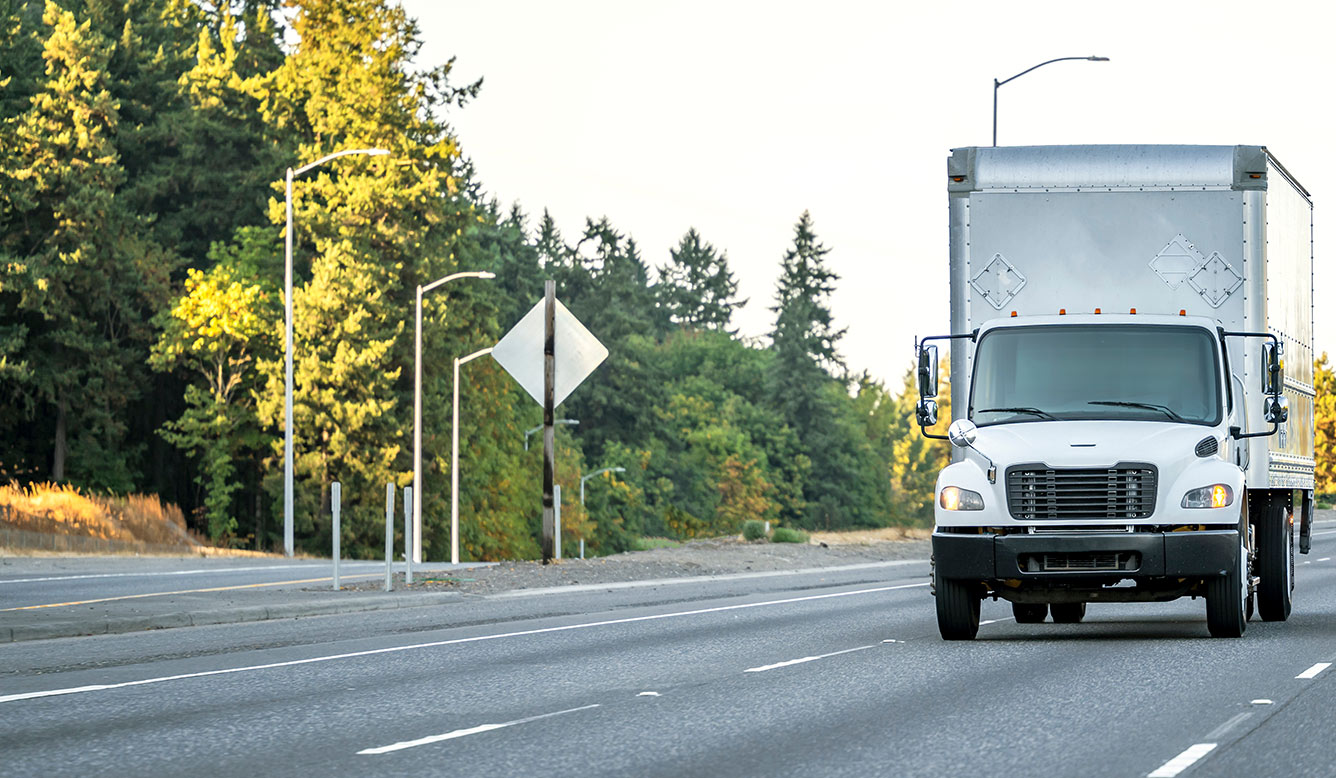July 15, 2025
Using Freight Technology to Overcome Seasonal Challenges
Seasonal swings are not just a trend in shipping and transportation; they are a constant. Whether it is the rush of back-to-school in late summer, the surge of holiday shopping in Q4, or the slowdown in early January, these patterns create unique freight challenges that carriers, shippers, and 3PL providers must overcome year after year.
For non-asset-based carriers, like Last Mile Logistics, success lies in flexibility, precision, and the smart use of freight technology.
Let’s explore how technology in the freight industry is helping businesses stay ahead of seasonal volatility and why investing in digital solutions is no longer optional, but essential.
Seasonal Freight Challenges
Every season brings its own set of logistics demands. These fluctuations are driven by supply and demand, freight rates, weather events, and shifting consumer behavior. The impact can be felt across every link in the supply chain.
Some key seasonal logistics challenges include:
Summer Heatwaves – Extreme temperatures can impact equipment, driver safety, and refrigerated freight.
Holiday Shipping Peaks – Q4 brings the largest spike in shipping demand, with increased orders, tighter delivery windows, and higher costs.
Back-to-School Season – Retailers and suppliers scramble to restock inventory, leading to congested lanes and warehouses.
Winter Weather Delays – Snow, ice, and storms disrupt road and rail transport, affecting delivery timelines and driver availability.
Spring Restocking – After the winter lull, industries like construction and gardening push for early inventory arrivals.
These fluctuations help to define what many in the field refer to as logistics seasons. Planning for them is critical, and here is where all seasons logistics technology becomes fundamental.
How Freight Technology Provides a Competitive Edge
Modern freight operations rely on speed, visibility, and agility. Fortunately, today’s digital tools are purpose-built to solve precisely the kinds of problems posed by seasonal demand shifts. Let’s take a closer look at how freight technology is addressing long-standing issues in the shipping and transportation industry.
Real-Time Tracking and Visibility
On-time delivery can make or break a client relationship; that’s why having full visibility into your shipments is vital. GPS tracking, IoT sensors, and cloud-based dashboards allow shippers and carriers to:
- Monitor load location and condition in real time
- Predict and reroute around weather-related delays
- Communicate proactively with customers and vendors
Enabling such a level of transparency helps manage expectations and avoid costly surprises, especially during high-demand periods.
Predictive Analytics for Better Planning
Big data and artificial intelligence are now utilized to forecast trends in shipping demand by analyzing historical data, weather patterns, inventory turnover rates, and consumer behavior. These tools support:
- More accurate seasonal planning
- Smarter route and warehouse optimization
- Reduced risk of overstocking or understocking
Instead of reacting to freight disruptions, businesses can prepare in advance, minimizing downtime and maximizing efficiency.
Automated Load Matching
As freight challenges mount during peak seasons, capacity becomes scarce. Digital freight matching tools, also known as load boards or automated broker platforms, utilize algorithms to pair loads with available carriers in real-time.
This eliminates the guesswork and lag time that comes with manual matching and helps:
- Reduce deadhead miles
- Improve on-time pickup and delivery
- Balance capacity faster across seasonal fluctuations
For non-asset-based carriers, automated load matching is a strategic advantage when agility is critical.
Cloud-Based Communication Tools
With multiple partners in the supply chain, from vendors and shippers to delivery crews and white-glove technicians, keeping everyone informed is crucial. Cloud-based collaboration tools help stakeholders share updates, documentation, delivery instructions, and alerts instantly.
These platforms ensure:
- Fewer errors in the field
- Faster response to seasonal disruptions
- Stronger vendor accountability
Better communication leads to smoother handoffs, even during the most chaotic shipping seasons.

Technology in Action: White Glove and Expedited Shipping
For high-value and fragile shipments like medical equipment, garden fountains, or electronics, white glove and expedited shipping services require precision logistics. Seasonal pressures add extra layers of risk.
Fortunately, technology is leveling the field. Route optimization software and driver apps ensure that crews follow the safest, most efficient path, factoring in weather, traffic, and location-specific access challenges. Integrated scheduling tools help avoid missed windows, and mobile proof-of-delivery systems offer peace of mind at every drop-off.
By combining skilled labor with intelligent tools, carriers can deliver premium service year-round.
Reverse Logistics and Seasonal Returns
Post-holiday returns, product recalls, and seasonal overstock are inevitable realities in the shipping cycle. Technology is especially useful in managing the reverse logistics process, helping logistics providers:
- Identify the most cost-effective return paths
- Track inventory in real time
- Reduce delays in restocking or recycling
A strong reverse logistics strategy is key to maintaining profitability and customer satisfaction when seasonal cycles shift.
Strategic Warehousing and Pool Distribution
Another effective way to deal with seasonal freight surges is through strategic warehousing and pool distribution. Freight technology makes it easier to manage distributed inventory, automate restocking, and streamline order fulfillment.
For example:
- A warehouse management system (WMS) can automate reordering based on real-time stock levels.
- Pool distribution software helps consolidate shipments heading to the same region, cutting costs and reducing carbon emissions.
This kind of tech-driven optimization is vital for businesses operating in diverse logistics seasons.

Vendor Management and Technology Integration
Technology also strengthens vendor management, particularly when dealing with multiple suppliers across various regions. With the right platforms, logistics providers can monitor performance metrics, compliance, and shipment accuracy in real time.
Benefits include:
- Easier identification of bottlenecks
- Faster resolution of seasonal delays
- Improved vendor accountability and trust
By keeping all partners on the same digital page, non-asset-based carriers can offer a seamless experience during even the busiest freight seasons.
Why “All Seasons Logistics” Is Not Just a Buzzword
A business that claims to offer all-season logistics must be ready to handle disruptions, pivots, and demand spikes without missing a beat. That is only possible when the backbone of the operation is digital.
The right freight technology does not merely offer convenience; it empowers:
- Real-time decision-making
- Scalable operations
- Superior customer service, year-round
Consumer expectations are nowadays at an all-time high, and every supply chain is under constant pressure; therefore, relying on manual systems is a liability.
Embracing the Future of Freight
Seasonal changes in the shipping and transportation industry are not going away. In fact, with ongoing climate events, geopolitical shifts, and e-commerce growth, freight cycles may become even more volatile.
To thrive in this setting, non-asset-based carriers and shippers alike must continue investing in technology in the freight industry. Whether it is optimizing delivery routes, improving warehouse throughput, or tracking return shipments, the right tech makes all the difference.
By embracing freight technology as a core part of your seasonal strategy, your business will overcome seasonal hurdles and turn them into opportunities for growth and excellence.
Looking for a smarter way to navigate logistics seasons? Partner with Last Mile Logistics to embrace the power of real-time tools, data-driven planning, and service-first logistics for every season. Because at the end of the day, it is not only about moving freight but about moving it better, faster, and smarter, all year long.
Arnie, our VP of Sales and a real logistics pro, is ready when you are!

